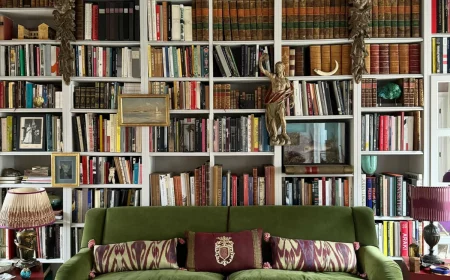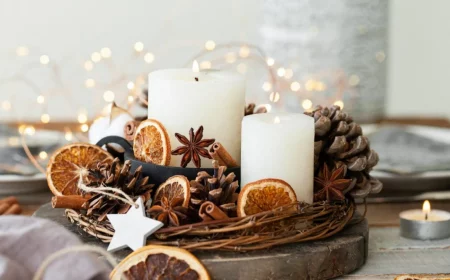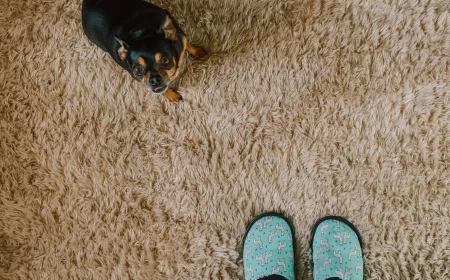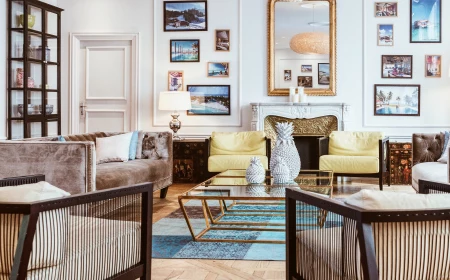Forget the ‘Black Thumb’—Here’s How to Actually Keep Houseplants Alive
I’ve spent a long, long time with my hands in the dirt. From giant commercial greenhouses to fancy home installations, and even in my own tiny apartment, I’ve seen it all. Trends in plants come and go, but one thing is constant: people want to bring a little bit of life indoors. You see a gorgeous plant in a magazine and think, “I want that!”
In this article
- First Things First: Become an Expert on Your Own Home
- The Kitchen: A Hard-Working Plant Paradise
- The Bedroom: Your Personal Oxygen Bar
- The Bathroom: A Steamy Tropical Spa
- The Living Room: Time for a Statement Piece
- Ready for Your First Plant Run? Here’s Your Shopping List.
- The Real Secrets to Success
- A Quick Word on Pests and Safety
- It’s a Journey, Not a Destination
- Inspirational Gallery
But then the trouble starts. That perfect plant begins to look… well, sad. The leaves turn yellow, the stems get all droopy, and before you know it, you’re convinced you have a “black thumb.”
I’m here to tell you that the “black thumb” is a complete myth. Honestly. Success with houseplants isn’t about some innate magical ability. It’s about paying attention and making a good match. It’s treating a plant like the living thing it is, not just another piece of furniture. My goal isn’t just to hand you a list of popular plants; it’s to share the method the pros use to make sure a plant will actually thrive, not just survive.
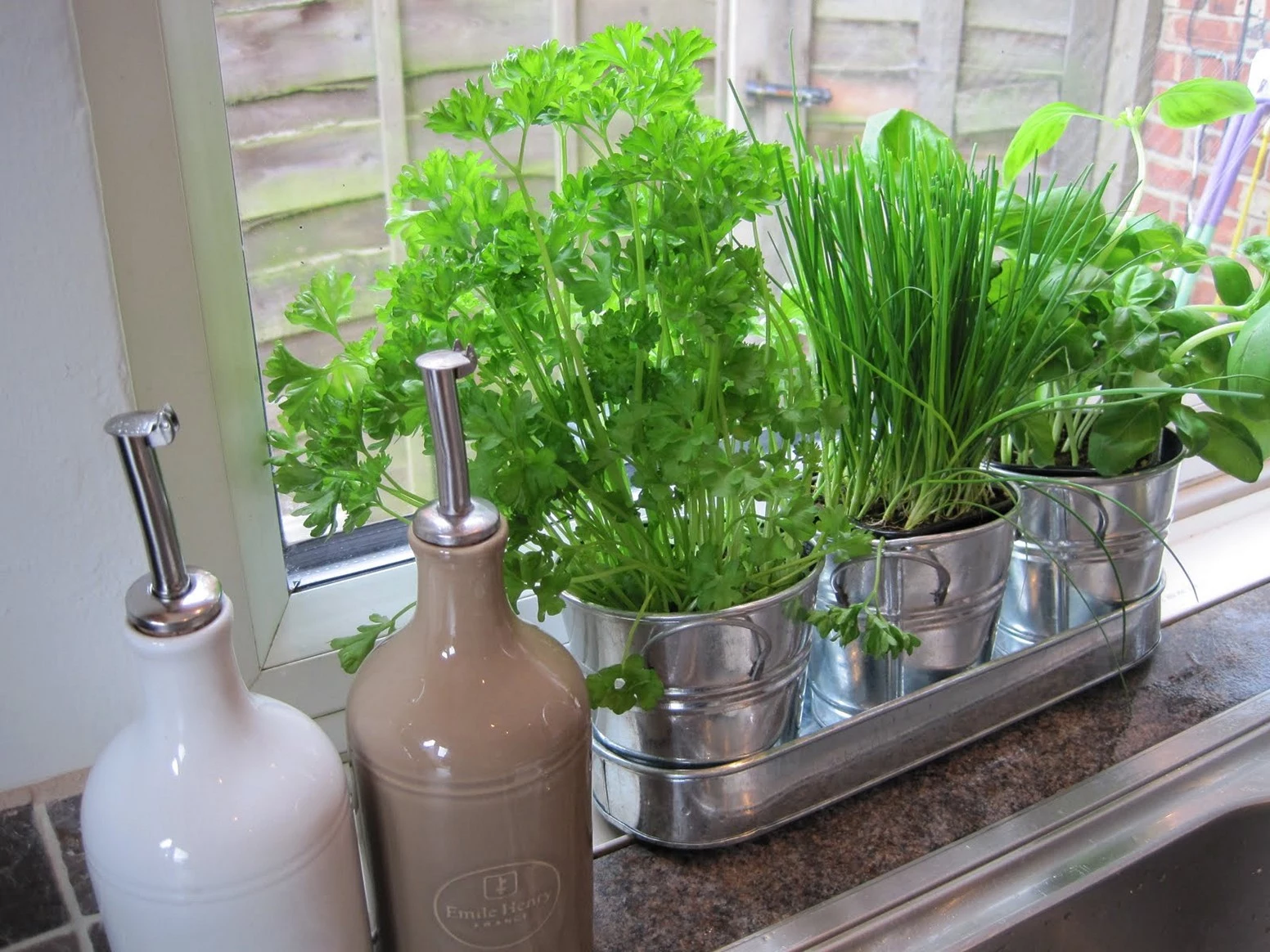
First Things First: Become an Expert on Your Own Home
Before you even dream of heading to a nursery, you need to assess your space. This is, without a doubt, the most important step. Professionals do a full site assessment before they bring in a single plant, and you should do the same for your home. You need to get a real sense of your light, humidity, and temperature. This is the foundation for everything.
Let’s Talk About Light
Light is literally a plant’s food. Without the right kind, it can’t make energy and will slowly starve. Plant tags can be annoyingly vague with terms like “bright, indirect light,” so let’s clear that up.
- Direct Sun: This is the intense stuff. Think of a spot that gets blasted by the sun’s rays for hours, like right in a south-facing or west-facing window. This will scorch most tropicals, but cacti and succulents absolutely love it.
- Bright, Indirect Light: This is the sweet spot for the vast majority of common houseplants. It means the room is very bright, but the sun isn’t hitting the leaves directly. It’s usually found near an east-facing window or a few feet back from a hotter south or west window. A great way to check is the hand-shadow test. If you hold your hand up and it casts a soft-edged shadow, you’ve got it. A sharp, defined shadow means the light is direct.
- Medium Light: This is what you’d find deeper in a room, away from the windows. It’s a spot that might get a little weak morning sun but is mostly in shade. Many plants can tolerate this, but don’t expect rapid growth or super vibrant colors.
- Low Light: Okay, heads up: low light does not mean NO light. Every plant needs some light to live. Low light is the corner of a room or a spot near a north-facing window. Only the toughest plants can hang out here long-term. Putting a plant in a windowless hallway is a recipe for disaster unless you commit to using a dedicated grow light.
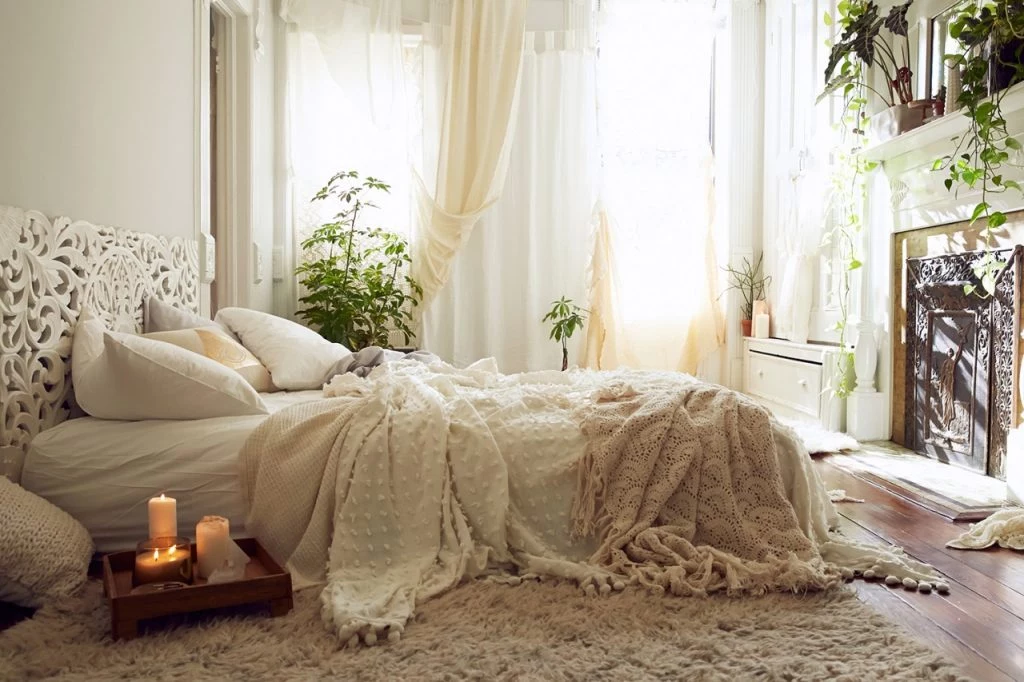
Humidity and Temperature Matter, Too
Most houseplants are tropical, meaning they evolved in warm, humid jungles. Our homes, with central heat and A/C, are often desert-dry by comparison. A simple little gadget called a hygrometer can tell you the exact humidity level in your home. You can grab one for about $10-15 online, and it’s a game-changer for understanding your space. While most homes sit around 30-40% humidity, many of these plants crave 50-60%.
Also, pay attention to drafts. Keep your plants away from heating vents, radiators, and drafty doors. Sudden temperature swings are super stressful and can cause a plant to drop its leaves, especially fussy ones like the Fiddle Leaf Fig.
The Kitchen: A Hard-Working Plant Paradise
The kitchen is a fantastic place to start your indoor garden. It’s a hub of activity where plants can be both beautiful and useful. Naturally, everyone thinks of herbs.
Herbs like basil, rosemary, and thyme need a ton of sun to produce the flavorful oils that make them taste and smell so good. To really do well, they need a spot that gets at least six hours of direct sunlight a day—a south-facing kitchen window is perfect. Without enough light, they get “leggy,” meaning they stretch out with long, weak stems and very few leaves. The flavor will be pretty disappointing, too.

Quick Tip: Use unglazed terracotta pots for your herbs. The porous clay helps wick moisture out of the soil, letting the roots breathe and preventing root rot, which is a common killer. And make sure any pot you choose has a drainage hole. That’s non-negotiable.
When it comes to soil, don’t just scoop some from your backyard. It’s too heavy and can bring in pests. I always make my own herb mix by combining two parts quality potting mix with one part perlite. You can find a decent-sized bag of perlite at any garden center or online for less than $10, and it will last you for ages. It makes a huge difference for drainage.
The Bedroom: Your Personal Oxygen Bar
There’s an old myth that it’s bad to have plants in the bedroom. While most plants do release a tiny bit of CO2 at night, some incredible plants do the exact opposite.
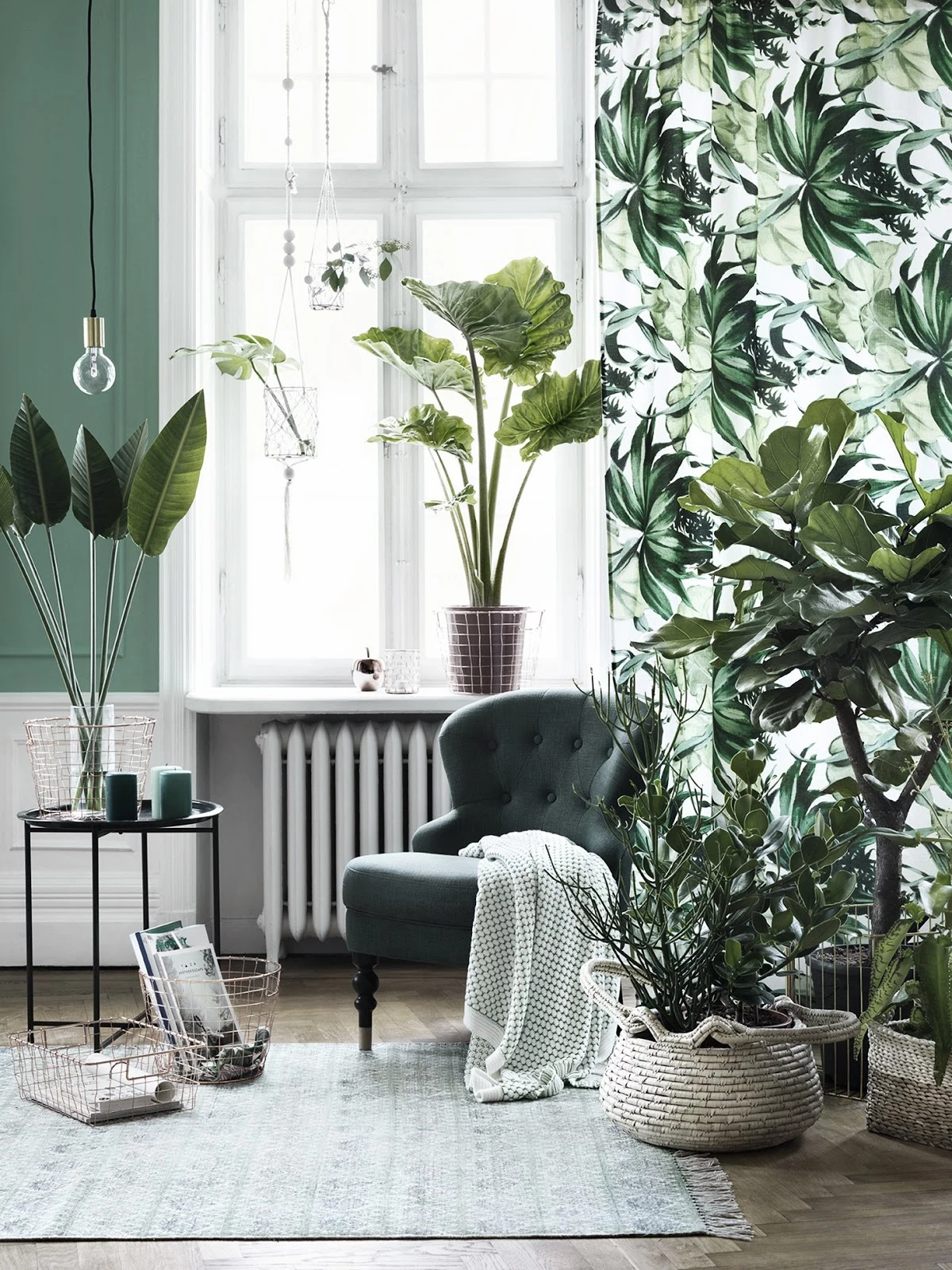
A special group of plants, mostly succulents, use a process called CAM photosynthesis. They open their pores at night to take in CO2 and release oxygen, which makes them perfect for a restful space. Bedrooms are often lower-light areas, so the focus here is on plants that are tough and low-maintenance.
Here are the undisputed champs for the bedroom:
- The Snake Plant (Sansevieria): This is the king. It’s a CAM plant, so it’s working for you at night. It can handle seriously low light and is incredibly drought-tolerant. The number one mistake is overwatering. I water mine maybe once a month in winter. A small one will set you back about $15-$25.
- The ZZ Plant (Zamioculcas zamiifolia): Another low-light hero that basically thrives on neglect. It stores water in underground rhizomes, so it’s super forgiving. Honestly, it prefers to be ignored. Overwatering is its only real enemy. It costs about the same as a Snake Plant.
- The Peace Lily (Spathiphyllum): This one needs a bit more water, but it’s a great communicator. The leaves will dramatically droop when it’s thirsty and pop right back up after you water it. It’s a fantastic beginner plant for this reason. A heads-up for pet owners: Peace Lilies are toxic to cats and dogs, so keep them out of reach.
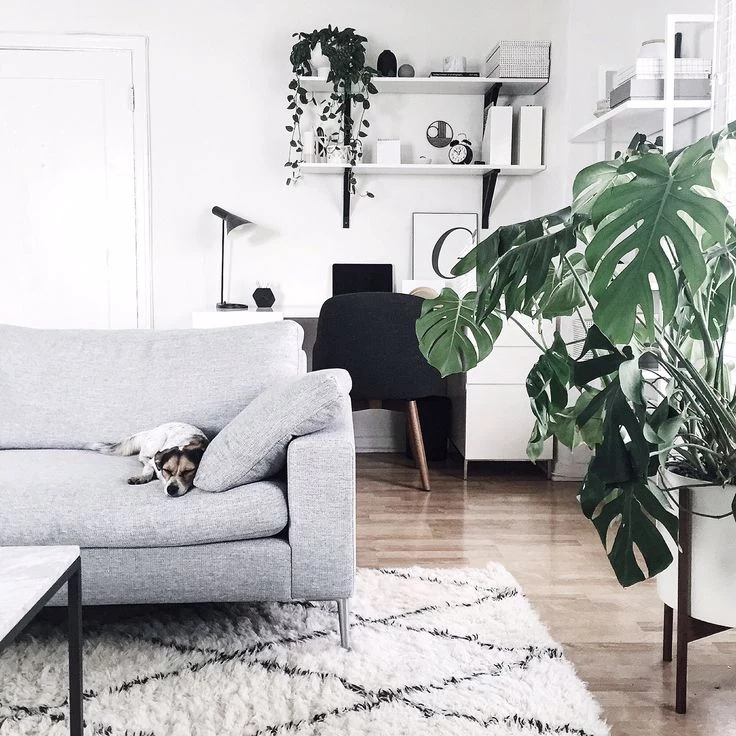
The Bathroom: A Steamy Tropical Spa
If you have a window in your bathroom, you’ve hit the jackpot. The steam from showers creates a high-humidity microclimate that many tropical plants go wild for.
High humidity is fantastic, but without good airflow, it can lead to fungal issues. I always recommend cracking a door or running the exhaust fan for a bit after a shower. Ferns are classic humidity lovers and do wonderfully in a bathroom setting, as it prevents their delicate fronds from getting crispy. I once brought a sad, brown Boston Fern back to life just by moving it into my bathroom—the transformation was amazing.
Calatheas, or Prayer Plants, are also perfect here. They’re famous for their stunning patterns but are notorious for getting brown, crispy edges in dry air. The bathroom solves that problem. By the way, they can be sensitive to minerals, so using distilled or rainwater can keep them looking their best.
The Living Room: Time for a Statement Piece
The living room is where you can go big. A large statement plant can act as living sculpture and completely define a space. Because these are bigger investments, choosing wisely is key.
A small Monstera might be around $25-$40, but a large, floor-standing Fiddle Leaf Fig can easily cost $100-$200. It’s an investment in your home’s aesthetic!
My Fiddle Leaf Fig taught me a hard lesson about consistency. I moved it three times in one month, and it threw a fit, dropping half its leaves in protest. Find a spot with bright, indirect light away from drafts and leave it there. That’s the secret.
Pro Tip for Large Plants: Place them on wheeled plant caddies. It makes it so much easier to roll them to the tub for a thorough watering and to rotate them so all sides get even light.
Your 5-Minute Plant Spa: Grab a damp cloth and gently wipe the dust off your plant’s leaves, especially the big ones. They’ll “breathe” and photosynthesize much more efficiently. It’s the easiest win of the day!
Ready for Your First Plant Run? Here’s Your Shopping List.
Feeling overwhelmed? Don’t be. Let’s make this simple. For your very first trip to the nursery, here is all you need to get started on the right foot:
- The Plant: Go for a ZZ Plant or a Snake Plant. They are the most forgiving plants on the market and will give you a huge confidence boost.
- The Pot: Pick a terracotta or ceramic pot that is about 1-2 inches wider in diameter than the plastic nursery pot the plant comes in. Make sure it has a drainage hole!
- The Soil: Grab one bag of all-purpose indoor potting mix and a small bag of perlite to mix in for better drainage.
That’s it! You can get all of this for a total of around $40-$60. You’re not just buying a plant; you’re setting yourself up for success.
The Real Secrets to Success
No matter the plant, a few core principles are universal. Master these, and you’re golden.
First, stop overwatering! Roots need oxygen, and constantly wet soil suffocates them. The best method is the finger test. Stick your index finger two inches into the soil. If it’s dry, water it. If it’s damp, wait. For really large pots, I use a wooden dowel or an unpainted chopstick. I push it deep into the soil, and if it comes out clean and dry, it’s watering time.
Second, don’t skimp on soil. I use a simple mix for most of my plants: one part potting soil, one part perlite, and one part orchid bark. This creates a chunky, airy mix that drains well.
And finally, go easy on the fertilizer. It’s a supplement, not food. I use a balanced liquid fertilizer diluted to half-strength, and only during the spring and summer growing season. In the fall and winter, I stop completely.
A Quick Word on Pests and Safety
Even the cleanest home can get pests. They can hitch a ride on new plants or even come in through an open window. I make it a habit to inspect my plants weekly. Look under leaves and at new growth for things like spider mites (fine webbing) or mealybugs (little white cottony spots).
From my own painful experience, pests like thrips can be a real battle. It took me two months of consistent treatment to clear an infestation. Your best defense is to quarantine any new plant for a few weeks before introducing it to your collection.
If you have pets or small children, always check if a plant is toxic before buying it. A quick search on a reliable veterinary or botanical site can save you a lot of heartache. If a plant is toxic, just place it on a high shelf or in a hanging basket, well out of reach.
It’s a Journey, Not a Destination
Bringing plants into your home is one of the most rewarding hobbies. It teaches you patience and observation. Start small with one or two easy plants, and learn their rhythms. And please, don’t be discouraged if you lose a plant along the way. I’ve lost plenty. Every single one was a lesson that made me a better plant person. The goal is to create a living space that feels good to you—and that’s a skill anyone can learn.
Inspirational Gallery
The number one killer of houseplants isn’t neglect, it’s too much love. Overwatering is the most common mistake new plant parents make. Roots that sit in soggy soil can’t breathe, leading to root rot. Before you reach for the watering can, do the finger test: stick your index finger about an inch into the soil. If it comes out dry, it’s time to water. If it’s still damp, wait another day or two.
Choosing a pot is about more than just looks; it’s about creating the right environment for your plant’s roots.
- Terracotta pots are porous, meaning they allow water and air to pass through. This is fantastic for succulents, cacti, and any plant prone to root rot.
- Glazed ceramic or plastic pots are non-porous and hold moisture for much longer. They are a great choice for thirsty plants like ferns and calatheas that prefer consistently moist soil.
A 1989 NASA study found that common indoor plants can be surprisingly effective at removing benzene, formaldehyde, and trichloroethylene from the air.
While you’d need a veritable jungle to purify your home’s air completely, this research highlights the quiet work plants do. A Snake Plant in the bedroom or a Spider Plant in the living room not only looks beautiful but also contributes to a healthier indoor environment, making them a true win-win for your space.
Is there such a thing as a truly “unkillable” plant for a beginner?
While no plant is totally indestructible, some are incredibly forgiving. The ZZ Plant (Zamioculcas zamiifolia) is a top contender. It thrives on neglect, tolerates very low light, and only needs watering once a month or even less. Another champion is the Snake Plant (Dracaena trifasciata), which similarly handles low light and infrequent watering. Starting with one of these is a great way to build confidence.
- Create an endless supply of new plants for your home.
- Share your hobby by gifting personalized, living presents to friends.
- Rescue and revive broken stems instead of tossing them.
The secret? The simple magic of propagation. For many plants, like the popular Pothos or Tradescantia, you can simply snip a piece of vine below a node (the little bump where a leaf grows), place it in a jar of water, and watch new roots sprout within a few weeks.
Terracotta pots: Porous and classic, they allow soil to dry out evenly, preventing soggy roots. Ideal for succulents and anyone who tends to overwater.
Glazed ceramic pots: Stylish and available in endless colors, they retain moisture longer. Perfect for tropicals that love consistent dampness, but be sure they have a drainage hole.
The right choice depends entirely on your plant’s needs and your watering habits.
Plants are the easiest way to add life, texture, and a sculptural element to any room. They are living art.
Think of fertilizer as a vitamin supplement, not a main meal. Most potting mixes come with enough nutrients to last a few months. After that, a light feeding schedule during the spring and summer growing season is plenty. A balanced liquid fertilizer, like Espoma’s Organic Indoor Plant Food, diluted to half-strength every 4-6 weeks, will keep most houseplants happy without the risk of burning their roots.
You don’t need a big budget to create a lush indoor oasis. Some of the best plants can be found for free or very cheap if you know where to look:
- Ask friends or family for cuttings from their established plants. A single Pothos vine can start a whole new plant.
- Check local social media groups for plant swaps in your area.
- Buy smaller,
Keep an eye out for unwelcome visitors by inspecting your plants weekly, especially the undersides of leaves. Telltale signs of pests include fine, spider-like webbing (spider mites), sticky residue on leaves (aphids), or tiny cotton-like specks in plant crevices (mealybugs). Catching them early is key. Often, a simple wipe-down with a damp cloth or a spray with a gentle insecticidal soap or neem oil solution is all you need to solve the problem.


